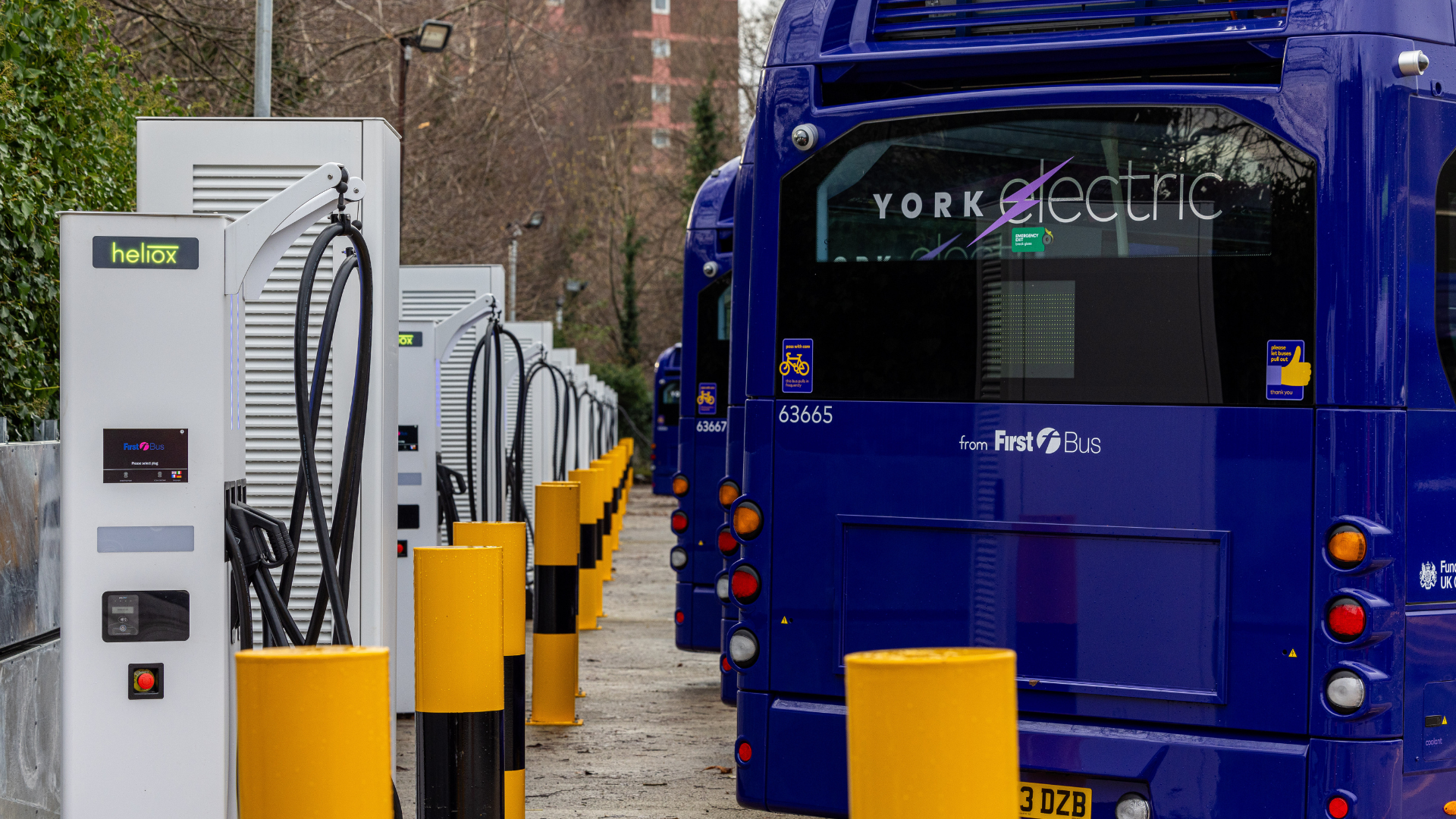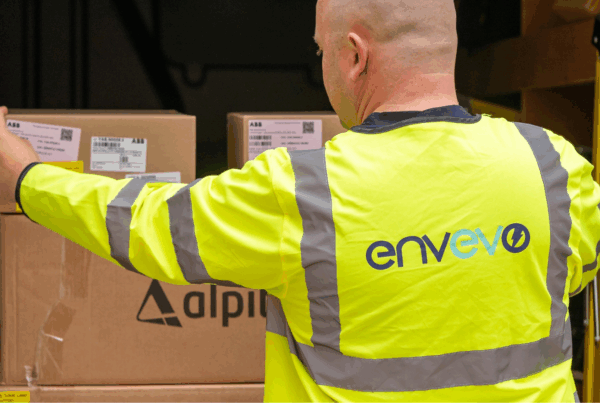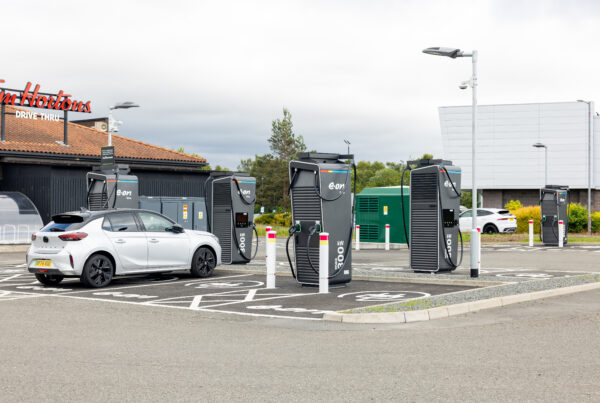Paving the Way for a Sustainable Transport Future
As the UK moves towards achieving its ambitious environmental goals, the shift to electric buses (e-buses) is a crucial step in decarbonising public transport. With the government’s commitment to phase out petrol and diesel vehicles by 2030, building an effective and scalable electric bus charging infrastructure is essential. In this blog post, we’ll explore how electric bus charging works in the UK, the types of chargers available, the challenges faced, and how Envevo can help overcome these barriers. We’ll also discuss the costing process and the impact on customer experience and sustainability goals.
How Electric Bus Charging Works in the UK
Electric buses in the UK are powered by large lithium-ion batteries that store electricity, which is then used to run electric motors that propel the bus. Charging these buses is essential for ensuring they can operate throughout their daily routes without running out of power. Charging can happen overnight at depots, during scheduled breaks, or en route using fast-charging systems.
In the UK, electric buses are often charged using either alternating current (AC) or direct current (DC) chargers. The charging process involves connecting the bus to a charging station, where electricity flows from the grid into the bus’s battery.
For cities and transport operators to make the transition to e-buses, it’s crucial that a robust charging infrastructure is in place to support daily operations. The UK’s public transport authorities and commercial fleet operators are investing heavily in this infrastructure as part of their green transport goals.
Types of Electric Bus Chargers
When it comes to electric bus charging infrastructure, there are several types of chargers available, each designed for different operational needs. These chargers vary in terms of charging speed, power, and application.
AC Charging
- Voltage: 380–415V AC
- Power Output: 22–50 kW
- Charging Time: 6–8 hours (usually overnight)
- Usage: This type of charging is ideal for overnight charging at bus depots where the buses have long periods of downtime. It’s cost-effective and commonly used in less busy depots where charging speed isn’t critical.
Fast Charging (DC Charging)
- Voltage: 600–1,000V DC
- Power Output: 100–450 kW
- Charging Time: 1–3 hours
- Usage: Fast charging stations are more commonly used at depots or at charging hubs located along bus routes. This type of charger allows for quicker turnaround times, meaning buses can be charged between shifts or during breaks.
Pantograph Charging
- Voltage: 600–750V DC
- Power Output: 150–600 kW
- Charging Time: 5–15 minutes (quick, on-the-go charging)
- Usage: Pantograph charging systems are mounted overhead and are used to charge buses en route at strategically placed locations, such as key bus stops or interchanges. The bus driver simply stops beneath the pantograph charging station, and the system connects automatically. This method is ideal for reducing downtime and increasing operational efficiency, especially for buses that need to run longer routes without returning to a depot.
Gantry Charging
- Voltage: 600–750V DC
- Power Output: 200–600 kW
- Charging Time: 5–10 minutes
- Usage: Gantry charging systems are similar to pantograph systems but are typically deployed at bus terminals or depot areas. A gantry system consists of a large, automated structure that positions itself over the bus to charge it via a cable or pantograph. These systems are designed for fast-charging and are ideal for high-traffic hubs where buses are quickly passing through.
Requirements for Electric Bus Charging Infrastructure in the UK
To develop a reliable electric bus charging network in the UK, several requirements need to be addressed:
Grid Capacity and Power Supply
Electric buses require large amounts of electricity, especially when charging quickly. This demands a reliable power supply, which may require upgrades to the existing electricity grid. Local power networks must be able to handle the additional load without leading to disruptions or inefficiencies.
Space and Infrastructure
Bus operators need to install chargers that are compatible with their fleet. This involves selecting the right type of charger (AC or DC), and ensuring that it can support the appropriate power levels for different buses in operation.
Charging Equipment
Bus operators need to install chargers that are compatible with their fleet. This involves selecting the right type of charger (AC or DC), and ensuring that it can support the appropriate power levels for different buses in operation.
Management Systems
Integrated fleet management systems are necessary to monitor battery levels, charging status, and maintenance needs. These systems allow operators to plan charging cycles efficiently and ensure that buses are always ready for service.
Barriers to Electric Bus Charging Infrastructure in the UK
While the UK is making significant strides in building electric bus infrastructure, several barriers remain:
High Initial Costs
The upfront investment required to install charging infrastructure, including grid upgrades, charging equipment, and installation, can be significant. While the long-term benefits, such as reduced operational costs and emissions, are clear, many local authorities and bus operators face financial challenges.
Grid Constraints
In some parts of the UK, local power grids may not have the capacity to handle the additional demand from electric bus fleets. Upgrading the grid infrastructure can be both time-consuming and costly. BESS and Solar options may need to be considered to maximise power on site?
Charging Speed and Downtime
Fast charging reduces downtime for buses, but it also requires expensive high-power chargers and infrastructure. Ensuring that the buses remain operational with minimal downtime while charging presents a logistical challenge for fleet operators.
Standardisation Issues
Different charging technologies and connectors can cause compatibility issues across different bus models and charging stations, making it more difficult to scale up the infrastructure efficiently.
Overcoming Barriers with Envevo
Envevo, the UK’s leading EV turnkey provider, offers integrated solutions designed to overcome these barriers and make the transition to electric buses more seamless. Here’s how Envevo helps:
End-to-End Solutions: Envevo provides a complete range of services, from consulting and design to installation and ongoing maintenance. Their turnkey solutions help operators navigate the complexities of setting up charging infrastructure, offering a single point of contact for all needs.
Grid-Optimised Charging: Envevo leverages smart grid technology to ensure that charging schedules are optimised for both fleet operators and local energy networks. By strategically planning charging times, they help prevent grid overloads and reduce energy costs.
Scalable and Flexible Infrastructure: Whether you need overnight charging solutions for a small fleet or rapid opportunity charging stations for a busy route, Envevo offers scalable solutions that can grow with your fleet. Their modular infrastructure ensures that transit authorities can make phased investments without requiring significant upfront capital.
Charging Standardisation: By providing universal, interoperable charging systems, Envevo helps overcome the challenge of equipment compatibility. Their systems are designed to work seamlessly across different bus models and charging types.
The Costing Process
The cost of implementing an electric bus charging infrastructure can vary widely depending on the size of the electric bus fleet, the type of charging systems, amount of power required and location of the Point Of Connection, and the complexity of the installation. However, the key cost elements include:
- Charging Equipment: The cost of individual chargers, which may range depending on the charging type and power output.
- Installation and Grid Upgrades: Depending on the existing power infrastructure, significant upgrades may be needed, adding an additional cost.
- Maintenance and Operation: Ongoing costs for maintaining the charging network, managing energy consumption, and ensuring operational uptime.
While initial investment costs can be high, Envevo value engineer every project as standard. Our in-house team of Estimators and Electrical Design Engineers work closely with depot managers and bus operators to assess site, point of connection and more to ensure our clients meet budget. Engaging a turnkey provider allows a single contractor to oversee projects from inception through to energisation and continued infrastructure maintenance, which can reduce costs and streamline operations compared to employing multiple contractors for each phase.
Impact on Customer Experience and Sustainability Goals
Customer Experience:
- Reliability: The implementation of well-managed charging infrastructure ensures that buses run on time with minimal disruptions due to charging issues.
- Air Quality: Electric buses improve urban air quality by eliminating tailpipe emissions, resulting in cleaner and healthier environments for passengers.
- Noise Reduction: E-buses are much quieter than traditional diesel buses, offering a more pleasant journey for passengers.
Sustainability Goals:
- Reduction in Carbon Emissions: E-buses play a significant role in reducing a city’s overall carbon footprint by displacing diesel-powered buses.
- Energy Efficiency: Charging systems, especially those that use renewable energy sources and smart energy management, help promote a more sustainable energy ecosystem.
- Support for UK Green Goals: The UK aims to achieve net-zero emissions by 2050, and expanding electric bus fleets is a key part of this vision.
Conclusion
The UK’s journey towards a fully electric public transport network requires robust and scalable charging infrastructure. While there are challenges, such as high initial costs and grid constraints, solutions like Envevo are helping to address these barriers. With flexible, smart charging solutions, Envevo supports bus operators and local authorities in building the infrastructure needed to meet both their operational and sustainability goals. By investing in this infrastructure, the UK can create a cleaner, quieter, and more efficient public transport system for the future.




